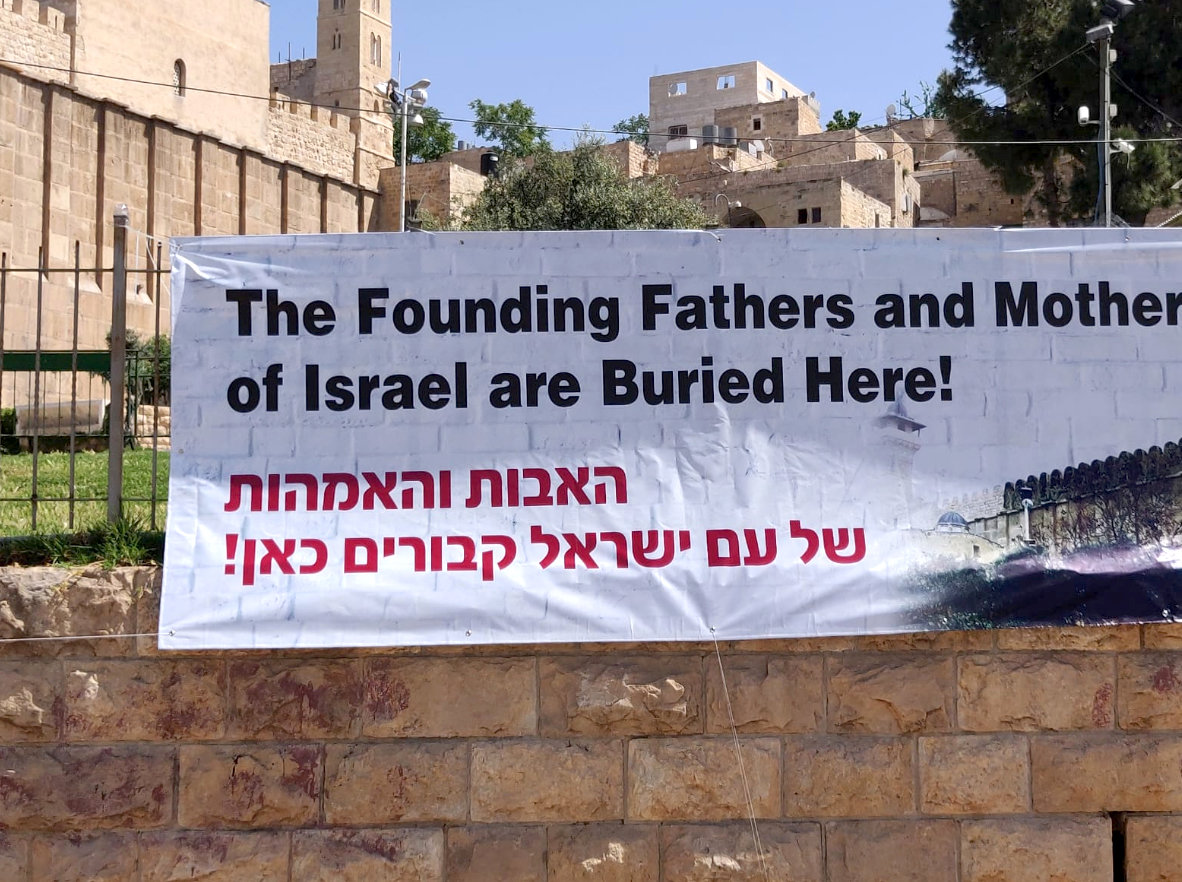History of Hebron: As Jewish as a place can be
No Jews have been as relentlessly maligned as the Jews of Hebron. From the time of their arrival following the 1967 Six-Day War — 40 years after the murderous annihilation of its Jewish community by rampaging Arabs — they have become the pariahs of the Jewish people. Their presence in the city where the patriarchs and matriarchs of the Jewish people are entombed, and where King David reigned before relocating his throne to Jerusalem, is deemed to be an unlawful and immoral Israeli intrusion on the Palestinian residents of Hebron.
The most recent contributor to this enduring falsehood is Tamara Neuman, an anthropologist and Research Fellow at the Middle East Institute at Columbia. The first page of her Introduction to “Settling Hebron: Jewish Fundamentalism in a Palestinian City” displays the misinformation that reveals her embedded bias. Gazing at the Machpelah shrine where, according to the biblical narrative, Abraham, Isaac, Jacob, Sarah, Rebecca and Leah are entombed, she nonetheless discerns its “staunch witness to the site’s Islamic character.” Muslims, however, first appeared in the seventh century CE long after the reign of King Herod, when the towering Machpelah enclosure was built.
It was, for Neuman, “impossible not to notice the deadening effects of the many [Israeli] soldiers deployed throughout a Palestinian urban area” — in translation, the ancient Jewish Quarter that was “established illegally” following the Six-Day War. (Her tour guide was a founder of Breaking the Silence, a renegade group of ex-soldiers who oppose Jewish settlements.) In a repetitive inversion of historical reality, she accuses Jewish settlers of “the remaking of many Palestinian areas into a geography of biblical sites and origins,” as if Palestinians superseded millennia of Jewish habitation in Hebron. In Neuman’s convoluted (and occasionally incomprehensible) rendering, “Jewish settlers establish a putative sense of the real, which arises from the very materiality of the scene.”
Historically myopic, ignoring millennia of Jewish history in Hebron, she can only discern the “colonial backdrop” of a “land takeover” with “Jewish observance and forms of direct violence in order to erase the presence of an existing Palestinian population.” As for erasure, it was Hebron Arabs who murderously obliterated the centuries-old Jewish community in 1929. She imaginatively, but falsely, describes their targeted violence against a tiny community of several hundred Jews and yeshivah students as “anticolonial riots.”
Ironically, given her book title, Neuman seems to have spent little time in Hebron, choosing instead to live for several months in the adjacent settlement of Kiryat Arba. An enclosed Jewish community up the hill — safe from the Palestinian terrorist attacks that have repetitively targeted the tiny Hebron Jewish community — it provided access to welcoming female residents, who comprised her primary sources of information.
But they, too, were blameworthy. The courageous group of Kiryat Arba women with their young children, who in the middle of a night in 1979 climbed by ladder into the former Beit Hadassah medical clinic to restore a Jewish presence in Hebron, were “spearheading a potentially violent act of settler expansion” into “Palestinian Hebron’s Old City.” They were guilty of “domesticating the space in ways that mobilized Jewish motherhood for settler gains.” Such “maternal activism of ideological settler women” is clearly not to Neuman’s liking, especially when it revived the long decimated Hebron Jewish community.
Similarly, “the transgressions, abuses and threats that have given the community of Kiryat Arba its notoriety” also extended to the restoration of the ancient Jewish cemetery up the hill from the Hebron Jewish Quarter, desecrated during the 1929 Arab rioting. Restored by a Kiryat Arba mother’s determination to bury her stillborn baby there, Neuman describes it as “Palestinian land in an area that settlers referred to as the Jewish cemetery,” as it had long been as anyone who reads the names and dates on its tombstones can instantly verify.
Perhaps most striking about a book titled “Settling Hebron” is how little time she spent there. There is no mention of a visit to the beautifully restored synagogue that was destroyed in 1929. She references the Beit Hadassah building (which she repetitively calls “the Daboya building”) that was opened in 1893 as a medical clinic (with free medical care for Jews and Arabs), as “taken over” by Israelis, thereby imposing “the Jewish domestic character of Palestinian space.” Had she actually spoken to any of its residents, she surely would have been guided to the adjacent museum that documents the long history of Jewish Hebron.
But the writer had her own agenda to fulfill. It is most vividly exposed when she absurdly describes the joyous descent of Jews from Kiryat Arba to their Machpelah holy site on Shabbat Chayei Sarah as “ongoing forays of armed ideological settlers into Palestinian space.” This, she writes, is “ethnicized space” for Jews that demonstrates “the spatial character of ethnic exclusivism.” But the reality is that Jews are prohibited by Muslim authorities from entry into the stunningly beautiful Isaac Hall except for 10 days a year. It is Muslims, not Jews, who impose “ethnic exclusivism.”
Neuman seems oblivious to the demographic reality that 500 Jews living in the Hebron Jewish Quarter are outnumbered by more than 20,000 Palestinians. And should she try to enter Arab Hebron — a thriving city of nearly 200,000 residents with shopping malls, high-rise apartment buildings and universities — she would be turned away because she is a Jew. If she writes a sequel based on history, not ideology, she might more accurately subtitle it “Palestinian Fundamentalism in a Jewish City.”
Jerold S. Auerbach is the author of “Hebron Jews: Memory and Conflict in the Land of Israel” and “Print to Fit: The New York Times, Zionism and Israel 1896–2016,” which was selected for Mosaic by Ruth Wisse and Martin Kramer as a “Best Book” for 2019.

 39.0°,
Fair
39.0°,
Fair 





